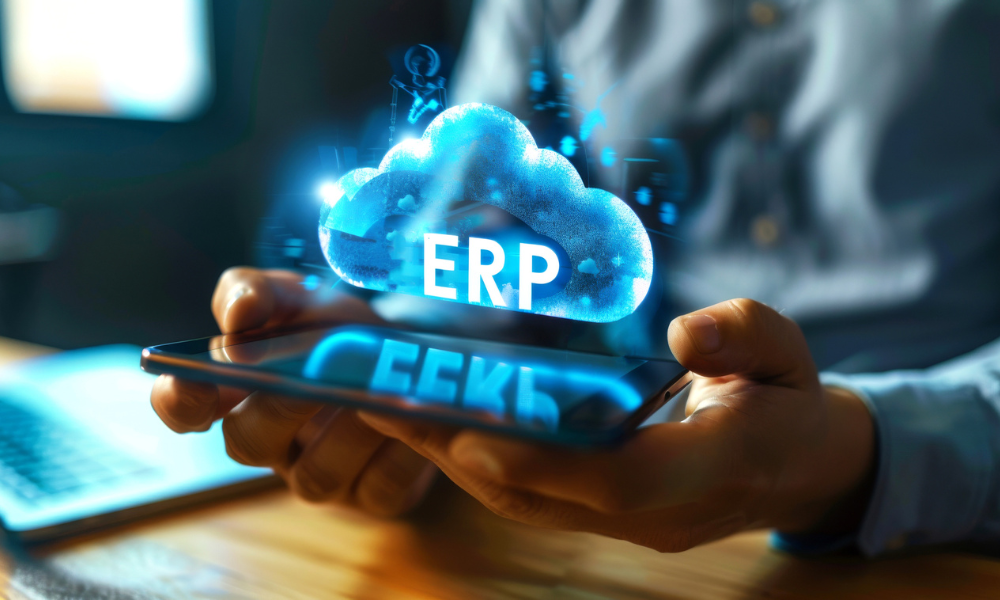Executive Summary
Environmental, Social, and Governance (ESG) has shifted from a voluntary disclosure exercise to a central driver of value creation and risk management. Modern Enterprise Resource Planning (ERP) platforms are now the operational backbone for ESG compliance, integrating sustainability data with day-to-day processes, automating controls, and generating audit-ready reports. This article explains what ESG requires, why ERP is uniquely positioned to deliver it, and how to architect an ESG‑ready ERP foundation that scales across business units and geographies.

Why ESG Needs ERP (and Not Just Spreadsheets)
- Unified data model: ESG performance draws on energy meters, procurement, HR, finance, logistics, and facilities. ERP eliminates silos by standardising master data (vendors, items, locations, employees) and transactional records (POs, work orders, invoices) that underpin ESG metrics.
- Real‑time visibility: Periodic, manual rollups produce lagging, error‑prone insights. ERP streams operational data continuously so leaders can monitor trends, intervene early, and validate progress against targets.
- Built‑in controls: Segregation of duties, approvals, audit trails, and record rules embedded in ERP translate directly into stronger governance and verifiable ESG evidence.
- Scalability & comparability: A single platform enforces consistent definitions and calculations across plants, countries, and subsidiaries—vital for benchmarking, assurance, and regulatory submissions.

What Good Looks Like: ESG Data Architecture in ERP
- Canonical metric catalog (e.g., scope 1–3 emissions, energy intensity, LTIFR, pay equity, supplier diversity). Link each KPI to:
- Data source(s) and system of record
- Calculation logic and emission factors
- Frequency, owner, and assurance method
- Data source(s) and system of record
- Event‑driven pipelines from ERP modules:
- Procure‑to‑Pay: Vendor codes of conduct, recycled content flags, LCAs per item, transport mode & distance
- Order‑to‑Cash: Shipment legs, packaging specs, return rates
- Manufacturing/Maintenance: Work orders, machine runtime, scrap, downtime, spare parts
- HR/Payroll: Demographics, training, safety, turnover
- Finance: CapEx/OpEx tagging for sustainability, carbon price shadow ledger
- Procure‑to‑Pay: Vendor codes of conduct, recycled content flags, LCAs per item, transport mode & distance
- Master data stewardship: locations, units, and taxonomies (GRI/SASB/CSRD/TCFD mappings) governed via approvals and versioning.
- Assurance layer: data quality rules, variance alerts, lineage traceability from report back to transaction.
Priority Use Cases to Start
- Energy & emissions accounting: Automate meter imports and fuel purchases; map to scopes; roll up by site/BU; forecast against SBTi targets.
- Supplier ESG onboarding: Scorecards in vendor master; gate POs on minimum ESG thresholds; corrective‑action workflows.
- Workforce equity & safety: Standardised HR datasets for DEI reporting; incident capture and root‑cause tracking; training completion analytics.
- Governance & risk: Policy attestations in ERP, control testing, breach logs, and automated audit trails tied to transactions.
Implementation Roadmap (90/180/360 days)
0–90 days
- Establish ESG steering committee and data owners
- Define 15–25 priority KPIs and their ERP sources
- Stand up a baseline dashboard and data quality checks
90–180 days
- Automate high‑impact feeds (energy, logistics, procurement)
- Embed ESG gates in purchasing and CapEx workflows
- Launch supplier and employee ESG portals for declarations and training
180–360 days
- Expand to scope 3 categories (purchased goods, transport, use of sold products)
- Integrate scenario modeling and shadow carbon pricing into planning
- Prepare for external assurance with evidence packs and lineage
KPIs & Targets (Illustrative)
- Energy intensity (kWh/unit output), YoY −7%
- Scope 1+2 emissions (tCO₂e), aligned to 1.5°C pathway
- Lost Time Injury Frequency Rate (LTIFR), −20%
- % spend with audited suppliers,
- Gender pay gap, <3%
Risks & Mitigations
- Data quality → automated validations, exception queues
- Change fatigue → role‑based dashboards, micro‑learning, incentives
- Regulatory drift → taxonomy service and versioned mappings
Call to Action
Treat ESG as an operational program, not a reporting chore. Start where ERP already has trustworthy data, automate, then expand coverage. The earlier you embed ESG into core workflows, the faster you unlock cost, risk, and growth benefits.
The Role of ERP Systems in Achieving ESG Compliance